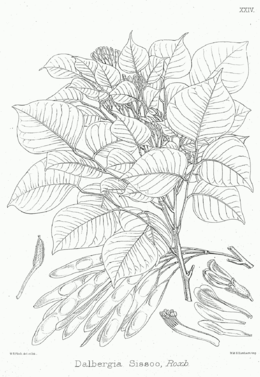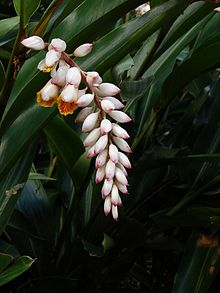By Simon Worrall
Ternate, Indonesia
Indonesia's
"Spice Islands" produced more nutmeg, mace, pepper and cloves than
anywhere else in the world and on the island of Ternate, one particular
tree has an extraordinary history.
"Bule, Bule," shout the children excitedly, as our jeep
threads its way up a steep road on the side of the volcano. "White man,
White man."
I am on Ternate, one of Indonesia's fabled Spice Islands.
The midday call to prayer mingles with the mosquito-whine of
motorcycles. Above us, smoke seeps from the side of Gamalama, the
pyramid-shaped volcano that dominates the island.
It had erupted only a month earlier, sending a tongue of
molten lava pouring down the mountain into the sea. This part of the
world is not called "The Ring of Fire" for nothing.
I am searching for the world's oldest clove tree. Why it is
called Afo, no one knows. Neither is it exactly certain when Afo was
planted. But estimates suggest it is between 350 and 400 years old.
For millennia, Ternate and the
neighbouring island of Tidore were the world's only source of those
fragrant, twig-like herbs that love to hide at the back of our kitchen
cupboards.
Cloves from Ternate were traded by Arab seafarers along the
maritime Silk Route as far afield as the Middle East, Europe and China.
A Han dynasty ruler from the 3rd Century BC insisted that
anyone addressing him chew cloves to sweeten their breath. Their origin
was a fiercely-guarded secret until the Portuguese and Spanish burst
into the Java Sea in the 16th Century.
Our hip, young Indonesian driver is clearly baffled as to why anyone should want to see an old tree.
And he clearly has no idea where Afo is. At a roadside stall
selling everything from basketballs to fruit, we stop to ask directions.
The stallholder points back down the hill. With great
difficulty, and reeking brake pads, we turn round and drive back down
the volcano.
After a few hundred yards, we spot a signboard pointing to some steps cut into the hillside.
The path winds upwards through groves of clove trees and bamboo.
 Afo survived the destruction of clove trees in the 1700s
Afo survived the destruction of clove trees in the 1700s
We are at nearly 1,800m (6,000ft) above sea level. Below us,
through the foliage, I can just make out the sea and, beyond it, the
island of Tidore.
Huffing and puffing up one last flight of steps I find myself under a tree that was probably here when Shakespeare was alive.
Afo was once 40 metres tall and four metres round. Sadly, today, all that remains is a massive stump and some bare branches.
A few years ago, villagers hungry for firewood even attacked Afo with machetes. A brick wall now surrounds it.
If the Dutch had had their way, Afo would not have survived at all.
The Netherlands United East India Company, or Voc, was the world's first multinational corporation.
Continue reading the main story
Find out more...
- Cloves are the dried flower buds of a tree belonging to the Myrtaceae family
- The trees can grow up to 12m height
- Cloves are used in cooking, either whole or in a ground form
- They are also used in some cigarettes, incense and perfume
And just as corporations today
seek to monopolise plant genes in the developing world, the Voc set
about seizing total control of spice production.
In 1652, after displacing the Portuguese and Spanish, the Dutch introduced a policy known as extirpatie: extirpation.
All clove trees not controlled by the Voc were uprooted and burned.
Anyone caught growing, stealing or possessing clove plants without authorisation faced the death penalty.
On the Banda Islands, to the south - the world's only source
of nutmeg - the Dutch used Japanese mercenaries to slaughter almost the
entire male population.
Like Opec today, the Voc also limited supply to keep prices
high. Only 800-1,000 tonnes of cloves were exported per year. The rest
of the harvest was burned or dumped in the sea.
Somehow, Afo managed to slip through the net. A rogue clove. A guerrilla plant waging a secret war of resistance.
Afo would eventually bring down the Dutch monopoly on cloves.
In 1770, a Frenchman, appropriately named Poivre, stole some of Afo's seedlings.
This Monsieur Pepper took them to France, then the Seychelles
Islands and, eventually, Zanzibar, which is today the world's largest
producer of cloves.
As I stand looking up into its branches, I wonder who planted Afo - and kept its location secret all those years.
Or did it just survive because of its remoteness high on the slopes of Gamalama?
Either way, this ancient clove tree remains a symbol of the
ultimate folly of empire - and the stubborn refusal of nature to be
controlled.










